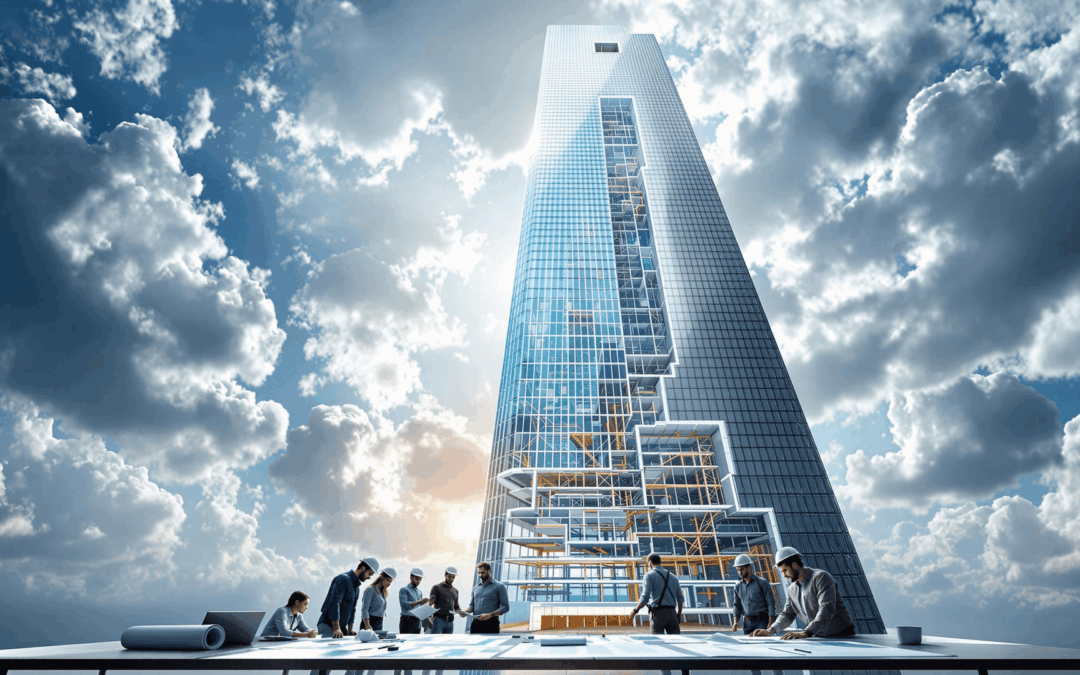The Structural Challenges of Designing High-Rise Buildings
Designing high-rise buildings presents unique structural challenges that require the expertise of a skilled structural engineer. These towering structures must withstand various forces while providing safety, comfort, and functionality. This article explores the primary structural challenges that engineers face when designing these architectural marvels.
Understanding the Forces
High-rise buildings must endure a range of forces, including:
- Gravity Loads: The weight of the building itself and its contents.
- Lateral Loads: Forces from wind and seismic activity.
- Dynamic Loads: Effects from occupants and environmental changes.
Effective design requires understanding how these forces interact and ensuring the building’s stability and safety.
The Role of the Structural Engineer
A structural engineer plays a pivotal role in the design and construction of high-rise buildings. Their expertise is crucial in:
- Material Selection: Choosing materials that meet strength and flexibility requirements.
- Load Bearing Systems: Designing systems to support and capably distribute loads.
- Safety Regulations Compliance: Ensuring the design adheres to local codes and safety regulations.
If you’re planning to hire a structural engineer, it’s essential to assess their experience with high-rise projects to guarantee success.
Wind and Seismic Considerations
Wind Loads
Wind can exert significant lateral loads on high-rise structures. Engineers must design buildings to:
- Minimize Wind Resistance: Using aerodynamic shapes and materials.
- Dampening Structures: Implementing features like tuned mass dampers to counteract wind effects.
Earthquake Resistance
Seismic activities pose a serious threat to tall buildings. Engineers must adopt earthquake-resistant designs by:
- Base Isolation Techniques: Allowing buildings to move independently of ground motion.
- Reinforced Frameworks: Using bracing systems to withstand lateral forces.
Innovation and Technology
Innovation plays an integral role in overcoming structural challenges. Some advances include:
- Smart Materials: Materials that adapt to changes in environments or loads.
- Simulation Software: Advanced modeling techniques to predict performance.
- Sustainable Practices: Eco-friendly design considerations that do not compromise structural integrity.
Fire Safety and Building Services
High-rise building design must incorporate robust fire safety measures and efficient building services such as:
- Fire Resistant Materials: Ensuring materials can withstand high temperatures.
- Evacuation Systems: Designing safe and efficient escape routes.
- Water and Waste Management: Implementing systems that accommodate high demand in an eco-friendly manner.
Future Trends
The future of high-rise buildings will continue to focus on advanced technologies and sustainable practices. Emerging trends include:
- Vertical Gardens: Incorporating greenery to enhance aesthetics and environmental benefits.
- Energy Efficiency: Using renewable energy sources and energy-efficient designs.
- Innovative Construction Techniques: Prefabrication and modular construction for efficiency.
Conclusion
Designing high-rise buildings is an intricate process that requires careful consideration of numerous factors. By understanding and addressing the structural challenges, structural engineers continue to push the limits of what’s possible in urban architecture. If you plan to embark on such a project, it’s crucial to hire a structural engineer with the expertise and vision to bring these complex designs to life.
Q1: What are the main structural challenges in designing high-rise buildings? A1: Designing high-rise buildings involves challenges such as managing gravity and lateral loads, ensuring wind and seismic resistance, and maintaining structural integrity using advanced materials and techniques.
Q2: How do structural engineers ensure skyscraper stability? A2: Structural engineers use reinforced frameworks, advanced materials, and load-bearing systems to distribute forces and ensure skyscraper stability, adhering to safety regulations.
Q3: Why is wind a concern for high-rise buildings? A3: Wind can exert significant lateral loads on skyscrapers, requiring aerodynamic designs and damping mechanisms to minimize movement and maintain comfort and safety.
Q4: How are high-rise buildings designed to withstand earthquakes? A4: Engineers employ earthquake-resistant designs, including base isolation and reinforced bracing systems, to allow buildings to absorb seismic energy and reduce damage.
Q5: What innovative technologies are used in high-rise construction? A5: Innovations in high-rise construction include smart materials, simulation software for performance prediction, and sustainable practices to balance design and environmental impact.
Q6: Why should you hire a structural engineer for building design? A6: Hiring a structural engineer ensures expert handling of complex design requirements, adherence to safety standards, and the successful completion of high-rise projects.
Q7: What future trends impact the design of tall buildings? A7: Future trends include energy-efficient designs, vertical gardens for aesthetics, and eco-friendly construction techniques, advancing both functionality and sustainability.

